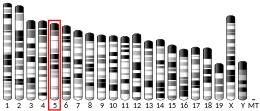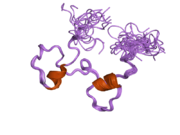CPSF4
CPSF4| CPSF4 | |||||||||||||||||||||||||||||||||||||||||||||||||||
|---|---|---|---|---|---|---|---|---|---|---|---|---|---|---|---|---|---|---|---|---|---|---|---|---|---|---|---|---|---|---|---|---|---|---|---|---|---|---|---|---|---|---|---|---|---|---|---|---|---|---|---|
 | |||||||||||||||||||||||||||||||||||||||||||||||||||
| |||||||||||||||||||||||||||||||||||||||||||||||||||
| 식별자 | |||||||||||||||||||||||||||||||||||||||||||||||||||
| 에일리어스 | CPSF4, CPSF30, NAR, NEB1, NEB-1, 절단 및 폴리아데닐화 특이 인자 4 | ||||||||||||||||||||||||||||||||||||||||||||||||||
| 외부 ID | OMIM : 603052 MGI : 1861602 HomoloGene : 38216 GenCard : CPSF4 | ||||||||||||||||||||||||||||||||||||||||||||||||||
| |||||||||||||||||||||||||||||||||||||||||||||||||||
| |||||||||||||||||||||||||||||||||||||||||||||||||||
| |||||||||||||||||||||||||||||||||||||||||||||||||||
| |||||||||||||||||||||||||||||||||||||||||||||||||||
| |||||||||||||||||||||||||||||||||||||||||||||||||||
| 위키데이터 | |||||||||||||||||||||||||||||||||||||||||||||||||||
| |||||||||||||||||||||||||||||||||||||||||||||||||||
개열 및 폴리아데닐화 특이성 인자 서브유닛 4는 CPSF4 [5][6][7]유전자에 의해 인체 내에서 부호화되는 단백질이다.
인플루엔자A 바이러스 NS1 단백질에 의한 폴리(A)함유 mRNA의 핵수출 억제를 위해서는 그 이펙터 도메인이 필요하다.NS1 이펙터 도메인은 세포 사전 mRNA의 3' 말단 처리 기계의 필수 구성요소인 분할 및 폴리아데닐화 특정 인자 4의 세포 30 kDa 서브유닛과 기능적으로 상호작용한다.
인플루엔자 바이러스 감염 세포에서 NS1 단백질은 물리적으로 절단 및 폴리아데닐화 특이인자 4, 30kD 서브유닛과 관련되어 있다.NS1 단백질이 시험관내 30kDa 단백질에 결합함으로써 RNA 기질에 대한 CPSF 결합을 방지하고 3' 말단개열 및 호스트 프리mRNA의 폴리아데닐화를 억제한다.
따라서 NS1 단백질은 바이러스가 아닌 세포 mRNA의 핵 수출을 선택적으로 억제한다.이 [7]유전자에 대해 서로 다른 아이소폼을 코드하는 복수의 대체 스플라이스 전사 변이가 설명되었다.
레퍼런스
- ^ a b c GRCh38: 앙상블 릴리즈 89: ENSG00000160917 - 앙상블, 2017년 5월
- ^ a b c GRCm38: 앙상블 릴리즈 89: ENSMUSG000029625 - 앙상블, 2017년 5월
- ^ "Human PubMed Reference:". National Center for Biotechnology Information, U.S. National Library of Medicine.
- ^ "Mouse PubMed Reference:". National Center for Biotechnology Information, U.S. National Library of Medicine.
- ^ Nemeroff ME, Barabino SM, Li Y, Keller W, Krug RM (Jul 1998). "Influenza virus NS1 protein interacts with the cellular 30 kDa subunit of CPSF and inhibits 3'end formation of cellular pre-mRNAs". Mol Cell. 1 (7): 991–1000. doi:10.1016/S1097-2765(00)80099-4. PMID 9651582.
- ^ Barabino SM, Hubner W, Jenny A, Minvielle-Sebastia L, Keller W (Aug 1997). "The 30-kD subunit of mammalian cleavage and polyadenylation specificity factor and its yeast homolog are RNA-binding zinc finger proteins". Genes Dev. 11 (13): 1703–16. doi:10.1101/gad.11.13.1703. PMID 9224719.
- ^ a b "Entrez Gene: CPSF4 cleavage and polyadenylation specific factor 4, 30kDa".
추가 정보
- Jenny A, Hauri HP, Keller W (1994). "Characterization of cleavage and polyadenylation specificity factor and cloning of its 100-kilodalton subunit". Mol. Cell. Biol. 14 (12): 8183–90. doi:10.1128/MCB.14.12.8183. PMC 359357. PMID 7969155.
- Thuresson AC, Aström J, Aström A, et al. (1994). "Multiple forms of poly(A) polymerases in human cells". Proc. Natl. Acad. Sci. U.S.A. 91 (3): 979–83. Bibcode:1994PNAS...91..979T. doi:10.1073/pnas.91.3.979. PMC 521437. PMID 8302877.
- Hillier LD, Lennon G, Becker M, et al. (1997). "Generation and analysis of 280,000 human expressed sequence tags". Genome Res. 6 (9): 807–28. doi:10.1101/gr.6.9.807. PMID 8889549.
- McCracken S, Fong N, Yankulov K, et al. (1997). "The C-terminal domain of RNA polymerase II couples mRNA processing to transcription". Nature. 385 (6614): 357–61. Bibcode:1997Natur.385..357M. doi:10.1038/385357a0. PMID 9002523. S2CID 4307073.
- de Vries H, Rüegsegger U, Hübner W, et al. (2000). "Human pre-mRNA cleavage factor II(m) contains homologs of yeast proteins and bridges two other cleavage factors". EMBO J. 19 (21): 5895–904. doi:10.1093/emboj/19.21.5895. PMC 305781. PMID 11060040.
- Strausberg RL, Feingold EA, Grouse LH, et al. (2003). "Generation and initial analysis of more than 15,000 full-length human and mouse cDNA sequences". Proc. Natl. Acad. Sci. U.S.A. 99 (26): 16899–903. doi:10.1073/pnas.242603899. PMC 139241. PMID 12477932.
- Scherer SW, Cheung J, MacDonald JR, et al. (2003). "Human chromosome 7: DNA sequence and biology". Science. 300 (5620): 767–72. Bibcode:2003Sci...300..767S. doi:10.1126/science.1083423. PMC 2882961. PMID 12690205.
- Kaufmann I, Martin G, Friedlein A, et al. (2005). "Human Fip1 is a subunit of CPSF that binds to U-rich RNA elements and stimulates poly(A) polymerase". EMBO J. 23 (3): 616–26. doi:10.1038/sj.emboj.7600070. PMC 1271804. PMID 14749727.
- Gerhard DS, Wagner L, Feingold EA, et al. (2004). "The status, quality, and expansion of the NIH full-length cDNA project: the Mammalian Gene Collection (MGC)". Genome Res. 14 (10B): 2121–7. doi:10.1101/gr.2596504. PMC 528928. PMID 15489334.
- Rual JF, Venkatesan K, Hao T, et al. (2005). "Towards a proteome-scale map of the human protein-protein interaction network". Nature. 437 (7062): 1173–8. Bibcode:2005Natur.437.1173R. doi:10.1038/nature04209. PMID 16189514. S2CID 4427026.
- Oh JH, Yang JO, Hahn Y, et al. (2006). "Transcriptome analysis of human gastric cancer". Mamm. Genome. 16 (12): 942–54. doi:10.1007/s00335-005-0075-2. PMID 16341674. S2CID 69278.
- Twu KY, Kuo RL, Marklund J, Krug RM (2007). "The H5N1 influenza virus NS genes selected after 1998 enhance virus replication in mammalian cells". J. Virol. 81 (15): 8112–21. doi:10.1128/JVI.00006-07. PMC 1951328. PMID 17522219.
외부 링크
- UCSC Genome Browser의 인간 CPSF4 게놈 위치 및 CPSF4 유전자 상세 페이지.
- PDB for UniProt: O95639(분열 및 폴리아데닐화 특이성 요소 서브유닛 4)에서 PDB에서 사용할 수 있는 모든 구조 정보의 개요.








